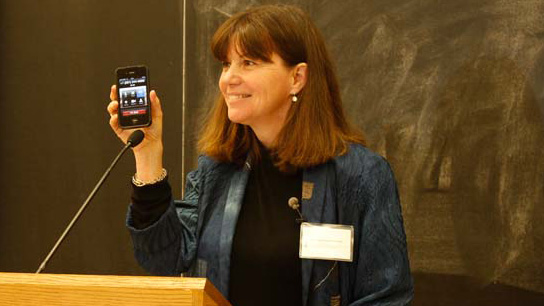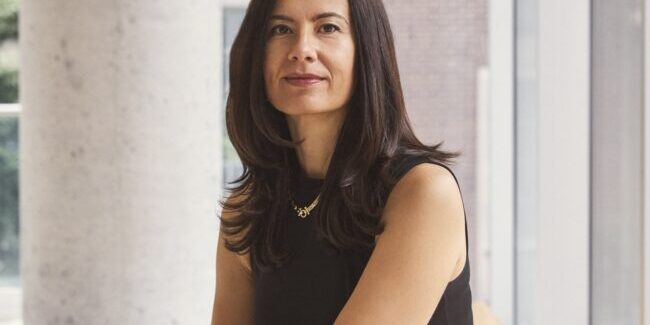
Reception was surprisingly good on the phone call from space.
“We just flew across Canada,” said Commander Chris Hadfield, speaking from the International Space Station.
“It took about seven minutes.”
His voice travelled from the reaches of earth’s orbit to astronaut Catherine Coleman’s mobile, held up to a microphone before a packed hall of University of Toronto students and faculty.
An astronaut with the National Aeronautics and Space Administration (NASA), Coleman was at U of T on January 9 to deliver the latest talk in the Lectures on the Leading Edge (LLE) series hosted by the Department of Chemical Engineering & Applied Chemistry.
She called in a favour with her long-time friend and colleague Hadfield to connect her audience with the realities of science in space in the most immediate of ways.
After the brief call ended, Coleman shared her own stories and experiences from three trips, and more than 180 days, in space. Though Coleman was a part of two space shuttle missions (1995, 1999) her talk focused on the six months she spent on the International Space Station (ISS) starting in December of 2010, as well as how the facility offers opportunities for scientists at the University of Toronto.
“Being an astronaut is not just about going to space, it’s about being eyes and ears,” said Coleman, “it’s about representing the human point of view. Because more than just the actual stuff that gets done up there, we are part of a team that explores.”
Coleman described some of the numerous experiments on board the space station – such as using blood pressure readings from space to predict fainting and analyzing bone metabolism to further osteoporosis research. As the mission’s lead science officer, Coleman led more than 150 different investigations.
“In science and engineering, we address critical societal questions,” said Professor Molly Shoichet (ChemE, IBBME). “The purpose of Lectures on the Leading Edge is to shed light on new ideas and ways of thought. Catherine’s lecture did exactly that. She inspired members of our audience to tap into their hidden potential.”
To read the full article on Coleman’s lecture, visit U of T News.



